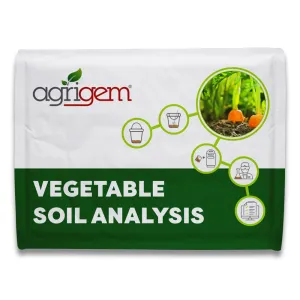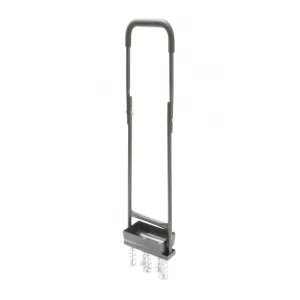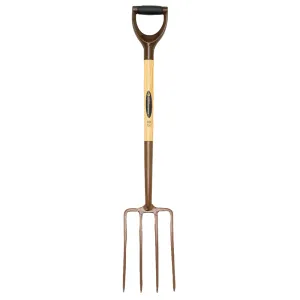1. Understand your garden soil
Before improving your garden soil, it’s worth getting to grips with it and understanding what you’re working with.
Garden soils in the UK generally fall into one of four types: sandy, clay, loamy, or peaty. Each type has its own characteristics:
- Sandy soil drains quickly but lacks nutrients.
- Clay soil retains water but can become compacted, making it difficult for roots to penetrate.
- Loamy soil is considered ideal, as it balances texture, nutrients, and drainage.
- Peaty soil is acidic and retains moisture, but it may lack essential nutrients.
To determine your soil type, simply grab a handful of moist soil and squeeze it. If it crumbles easily, it’s likely sandy. If it holds its shape and is sticky, it’s clay. Loamy soil should feel smooth and crumbly, while peaty soil will be darker and wetter than other types.
You can read more about the properties of garden soil in our guide here. This will tell you what influences the pH of your soil and how to alter it.
Once you know the type of soil you have, analyse it for nutrition levels to understand what is available for plants.
Our soil analysis kits will give you a full understanding of the nutrition levels in your soil together with a tailored fertiliser recommendation if needed.
2. Add organic matter
Incorporating organic matter is one of the best ways to improve soil structure and fertility.
Organic matter, such as compost, well-rotted manure, leaf mould, and green manure, enhances soil aeration, water retention, and nutrient availability.
The organic matter in soil influences the structure of soil, and it is the structure that regulates the movement of water and air, affecting the availability of nutrients for plant health – so this is an important step in improving the quality of your garden soil.
- Compost enriches the soil with essential nutrients and beneficial microorganisms. Spread a layer of compost over your garden beds and work it into the top few inches of soil. If making your own, you can accelerate production with Compost Maker.
- Well-rotted animal manure is rich in nutrients. Ensure it is fully decomposed to avoid burning plant roots. Apply it in the autumn to allow it to break down over winter.
- Collect fallen leaves and allow them to decompose into a crumbly, dark material. Leaf mould improves soil structure and moisture retention. You can make leaf mould easily by shredding leaves and leaving them to decompose.
- Mulching helps retain soil moisture, suppress weeds, and regulate soil temperature. Check out our guide to garden mulch for more information.
3. Improve soil drainage
Good drainage is vital for healthy plant roots. Heavy clay soil can become waterlogged, so it is vital to change the structure of your soil if you have clay and intend to plant.
- Add coarse sand, fine gravel, or organic matter to break up the dense particles and enhance aeration.
- Consider adding Clay Breaker to help condition your clay soil without altering the soil’s pH. Clay Breaker will help break up compacted areas of garden soil making it easier to work and benefitting plant growth.
- Avoid compacting your soil if possible, by keeping walking on it to a minimum. When soil becomes compacted, water cannot move through it as effectively and therefore roots cannot access it.
- Encourage earthworms by adding organic matter. Worms are natural soil aerators and decomposers. They improve soil structure, enhance nutrient availability, and increase microbial activity.
- Creating drainage channels to help divert excess water away from your garden.
4. Aerate the soil
Aerating the soil can help alleviate compaction. You can aerate the soil by using a garden fork or a specialised aerator tool to create holes in the soil. This improves oxygen levels and encourages the growth of beneficial soil organisms.
Aerating is best done in autumn or spring when the soil is moist but not waterlogged. Check out our guide to lawn aeration for more information here.
While it may be tempting to till or dig the soil frequently, overworking can cause soil compaction, damage beneficial organisms, and disrupt soil structure.
Instead, work the soil only when necessary. For example, in vegetable gardens, avoid tilling every season; a light fork-over every few years is often sufficient.
5. Regularly Monitor and Maintain Soil Health
Regularly check your soil's condition and make necessary adjustments. Add organic matter annually, test soil pH and nutrient levels periodically, and observe plant health.
Water wisely – it is usually best to water plants deeply and infrequently rather than frequently but shallowly.
Keep on top of weeds, removing them where they might compete with your plants for soil nutrients and water.
Healthy soil is the foundation of a productive garden, so ongoing maintenance is essential. Follow these steps if you have heavy clay soil and you can look forward to growing healthy plants in no time!










